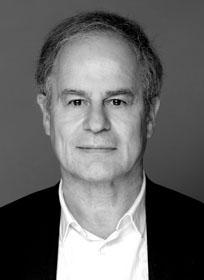Pierre de Meuron

Pierre de Meuron was born in Basel in 1950 and studied architecture at the Swiss Federal Institute of Technology Zurich (ETH Zurich) from 1970 to 1975 with Aldo Rossi and Dolf Schnebli. He received his degree in architecture in 1975, establishing his own practice with Jacques Herzog in 1978. In 1977, he was an assistant to Prof. Dolf Schnebli. Since 1994, he has been a visiting professor at Harvard University, and he has taught as a professor at ETH Zurich since 1999, where he co-founded ETH Studio Basel: Contemporary City Institute. In 2001, Pierre de Meuron and Jacques Herzog received the Pritzker Architecture Prize, followed by the Praemium Imperiale in 2007.
Currently, their office employs an international team of around 400 people working on more than 50 projects worldwide, with branch offices in, Hamburg, London, Madrid, New York and Hong Kong.
Herzog & de Meuron have designed a wide range of projects from the small scale of a private home to the large scale of urban design. While many of their projects are highly recognized public facilities, such as the National Stadium for the 2008 Olympic Games in Beijing, China (2008); the conversion of the Bankside power plant into Tate Modern in London, UK (2000), and the development of its extension, The Tate Modern Project, (2016), they have also completed several distinguished private projects such as the Dominus Winery in Napa Valley, California, USA (1998). Recent projects include M+, the new museum for visual culture in Hong Kong; the new Pérez Art Museum Miami, which opened to the public in December 2013, the New Hall for Messe Basel, Switzerland (2013) and the Parrish Art Museum in Water Mill, NY, USA (2012).
PROJECTS: NAIROBI, METROBASEL, CANARY ISLANDS, PARIS, NAPOLI, SWITZERLAND: AN URBAN PORTRAIT, SEENLANDSCHAFT, PUBLICATIONS: OPEN CLOSED, SWITZERLAND: AN URBAN PORTRAIT

